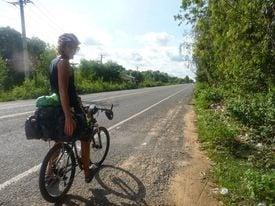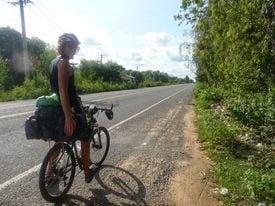An unroped climber has suffered a life-threatening fall on North America's most prominent and isolated peak. 31-year old Adam Rawski from Burnaby, British Columbia, was seen taking an almost 1,000-foot tumbling fall on the Denali Pass, as seen by climbers at the high camp on the West Buttress route. The event happened at around 18:00 on May 24 th.
Denali National Park and Preserve officials have said that Rawski is in critical condition. Maureen Gualtieri, a spokeswoman of the park, said, "Typically, falls that occur on the descent are often due to fatigue, and that would likely be the major contributing factor last night. It did not seem to be the weather.
That terrain this time of year sounds typical for an early-season upper mountain - not a lot of snow, and what's up there is very hard-packed. So it's not difficult to lose one's footing, and then hard to recover or stop the fall."
Incident Response
The guides who had seen Rawski fall from the high camp immediately began to approach him. Denali National Park officials stated that he was alive but unresponsive due to multiple traumatic injuries.
There is a fortunate twist to this tale though. The Denali National Park's high-altitude helicopter was doing its rounds of glacier monitoring surveys above the Kahiltna Glacier base camp at the time of Rawski's fall.
The helicopter piloted by Andy Hermansky flew to another camp to pick up mountaineering ranger Chris Erickson and touched base with Rawski in less than 30 minutes after being mobilized.
Erickson and another guide loaded Rawski onto the National Park's helicopter and he was airlifted to the tiny CDP of Talkeetna. Paramedics in the locality gave casualty care to Rawski until he was taken in a LifeMed helicopter to a hospital in Anchorage. At this point, he was still in critical condition.
Rawski had initially planned to summit Denali via the West Buttress route (the most commonly walked path) with his climbing partner on May 10 th. Rawski was not with his original climbing partner when he fell. It is usual for climbers to hike with others but it is unusual that he became separated from his partner.
All Are At Risk
This was to be Rawski's first climbing expedition in Alaska but he was not lacking inexperience. He had already spent years hiking in the Lower 48 and he already had the summits of Mount Baker and Mount Rainier under his belt.
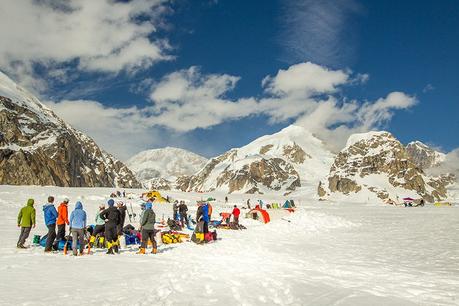
Image Credit: sheldonairservice.com
Even though Rawski's fall was extremely ill-fated (he tumbled the length of three football fields) his rescue's success did rely somewhat on luck. "I think all the pieces came together well to get him to advanced medical care as soon as possible, thereby bettering his chances of a successful recovery, which is what we're hoping for now," said Gualtieri.
Hopefully, this story will have a happy ending, news on Rawski's current medical state has not yet surfaced, no news is good news in a situation such as this though.
A Dangerous Park
Many other climbers have not been fortunate enough to have been rescued, in fact, there have been 127 deaths within Denali National Park since 1932. Two of those deaths have happened in May 2021.
On the 13 th May 2021, two climbers were struck by a falling block of glacier ice along the West Fork of the Ruth Glacier. In this case, park officials did not yet want to release the names of those involved.
One man was killed by the fallen serac, he was only 32 years old and hailed from Rigby, Idaho. His climbing partner from Logan, Utah, and one year his junior was knocked unconscious by the ice. Even though the surviving man's injuries were serious, upon waking he managed to use a satellite device to contact park officials after moving away from the debris.
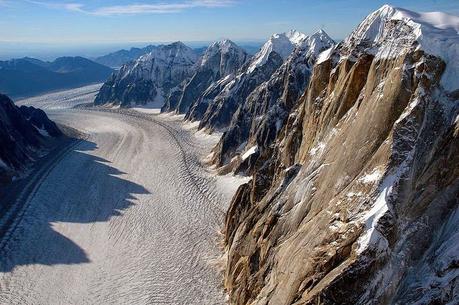
Image credit: amusingplanet.com
Just like in Rawski's case, the Denali National Park's high-altitude helicopter was mobilized to transport mountain rangers to the incident's location. Initially, the surviving climber was taken to a safer spot on the Ruth Glacier.
Initial emergency medical care was administered before the casualty was airlifted to Talkeetna Airport, where he was transferred onto an air ambulance.
Two days later the helicopter team returned to the incident's location but they were unable to recover the remains of the deceased climber.
Glacial Movement
In this accident, the climbers were roped together and were at the start of their climb of the west face of Reality Ridge. The men were likely serious about climbing as this is not a common route according to the park's spokeswoman Gualtieri.
She went on to explain that the hanging seracs that caused the fatal accident are basically "giant chunks of ice at the edge of a glacier that's coming from above".
Glaciers are not stationary objects, there is always a risk of movement for anyone that dares to tread on them. Huge chunks of ice falling from glaciers in Denali National Park are common but they are rarely the cause of death.
Glaciers are natural objects of unquestionable danger. Another risk they pose is hidden crevasses.
Mason Stansfield from Ouray, Colorado was only 28 years old when he fell to his death on a spur of the Eldridge Glacier on 3 rd May 2021. Stansfield had flown out with a friend and intended to enjoy 10 days of camping and ski touring on the spurs off of the main glacier. In the event of his fall, Stansfield was not roped to his ski partner.
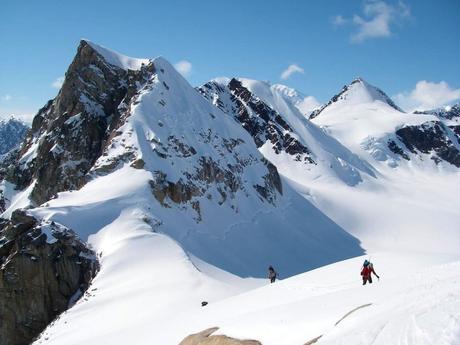
Image credit: summitpost.org
Stansfield was an experienced mountaineer who also worked as a professional guide. He was enjoying this personal trip before starting his fourth season of guiding in Denali National Park.
Stay Safe
It goes to show that professionals in the field of outdoor exploration with a huge deal of experience, knowledge, and insight can still find themselves becoming part of another tragedy.
People are beginning to once again enjoy their freedom to roam. Many of us have been reading, watching, planning, and dreaming about future trips. We'll be out of practice and perhaps biting off more than we can chew, higher summits, more exposure, more risk that we know we can safely manage.
The best way to get back on the trail is to take it slow to start with, ticking things off can become addictive but enjoying the moment is the most important thing.
Explore within your limits.
